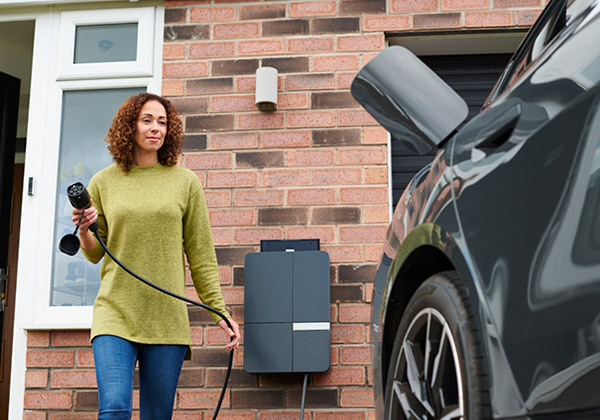Consultation commences on new draft standard for On-Site Battery Systems
Statements
Standards Australia has released for consultation a draft voluntary standard, DR AS/NZS 5139:201X Electrical installations – safety of battery systems for use with power conversion equipment.
The standard, prepared jointly by Australian and New Zealand stakeholders, includes provision for:
- Installation requirements for all battery systems connected to inverter energy systems, covering all battery types;
- Mitigating hazards associated with battery energy storage system installations; and
- Classifying batteries based on hazards, rather than chemistry type.
The release of the draft for public consultation aligns with the recommendations of the Roadmap for Energy Storage Standards released by Standards Australia in February 2017.
In the Roadmap, stakeholders identified the need to develop a Standard for the safe installation of battery energy storage systems as a top priority.
The location of battery systems in homes
The development of the draft standard has not been without controversy.
Earlier in 2017, concerns were raised in the media that the draft standard would seek to ban lithium-ion batteries in homes. Since then, experts from industry and government together with community interests have continued to work together to prepare the consultation draft.
The draft standard currently includes provisions to minimise the risk of self-sustaining fires. In considering the fire hazards associated with some of these systems, the draft contains provisions that exclude certain battery systems from being installed inside domestic homes. They may be installed externally and adjoining to domestic homes provided certain fire related safety measures are met.
These provisions have been included to try to safeguard against hazards during potential failure modes of a storage system, in the absence of available product standards.
In arriving at this consultation draft, it is clear that different views exist amongst stakeholders as to whether the draft provisions are set appropriately and whether the benefits of emergent technology are appropriately balanced with community safety expectations.
Given the level of interest in the introduction of battery storage in homes, public comment on the draft is sought in particular on Clauses 4.5.3 and Table 3.1 of the draft.
The release of the draft standard comes less than a week after the release of the Independent Review into the Future Security of the National Electricity Market (the Finkel Report) where it was noted that consumer demand could drive the number of on-site battery storage systems installed in Australian homes to more than 1 million by 2035.
Why doesn’t Australia just use International Standards?
There are no international electrical installation standards for battery energy storage systems. The draft has been developed by Australian and New Zealand stakeholders who share a common regulatory and technical standards framework.
The use of on-site battery storage systems is an emerging area of development internationally, with different countries setting different requirements within their own jurisdictions.
The draft document references and aligns with a number of international standards particularly as they relate to system components.
Who has developed this draft?
The technical committee responsible for developing this document is EL-042 Renewable Energy Power Supply Systems and Equipment. The committee includes stakeholders from industry, government, academia and other interest groups, as listed in the attachment.
What is the process from here?
All comments received during the 9 week public comment period will be considered in detail and resolved by the technical committee and, if substantive changes are made to the draft, the document will be released for a further period of consultation.
Once all comments are resolved, a vote will be undertaken by the technical committee as to whether the document is published, or not.
The use of all Australian Standards® is voluntary and governments may choose to reference Australian Standards® and other documents in regulation.
Access the draft and submit comments through our Public Comment portal.
All comments must be received by 15 August 2017.
Attachment:
The technical committee responsible for the development of AS/NZS 5139, includes representatives from the following organisations:
- Australasian Fire and Emergency Service Authorities Council
- Australian Energy Council
- Australian Energy Market Operator
- Australian Industry Group
- Australian PV Institute
- Australian Solar Council
- Clean Energy Council Clean Energy Regulator
- Construction, Environment and Workplace Protection, ACT Government
- Consumer Electronics Suppliers Association
- CSIRO
- Department of Economic Development, Jobs, Transport and Resources (VIC)
- Electrical Compliance Testing Association
- Electrical Regulatory Authorities Council
- Electrical Safety Organisation (New Zealand)
- Energy Efficiency & Conservation Authority of New Zealand
- Electricity Engineers Association (New Zealand)
- Energy Networks Australia
- Engineers Australia
- Institute of Electrical and Electronics Engineers
- Institute of Electrical Inspectors
- Joint Accreditation System of Australia and New Zealand
- Master Electricians Australia
- National Electrical and Communications Association
- New Zealand Electrical Institute
- NSW Fair Trading
- Office of the Technical Regulator (SA)
- Solar Energy Industries Association Inc
- Sustainable Electricity Association New Zealand
- Sustainable Energy Association
- The University of New South Wales
- Wellington Electrical Association Inc.
- Worksafe New Zealand

Standards Australia has released for consultation a draft voluntary standard, DR AS/NZS 5139:201X Electrical installations – safety of battery systems for use with power conversion equipment.
The standard, prepared jointly by Australian and New Zealand stakeholders, includes provision for:
- Installation requirements for all battery systems connected to inverter energy systems, covering all battery types;
- Mitigating hazards associated with battery energy storage system installations; and
- Classifying batteries based on hazards, rather than chemistry type.
The release of the draft for public consultation aligns with the recommendations of the Roadmap for Energy Storage Standards released by Standards Australia in February 2017.
In the Roadmap, stakeholders identified the need to develop a Standard for the safe installation of battery energy storage systems as a top priority.
The location of battery systems in homes
The development of the draft standard has not been without controversy.
Earlier in 2017, concerns were raised in the media that the draft standard would seek to ban lithium-ion batteries in homes. Since then, experts from industry and government together with community interests have continued to work together to prepare the consultation draft.
The draft standard currently includes provisions to minimise the risk of self-sustaining fires. In considering the fire hazards associated with some of these systems, the draft contains provisions that exclude certain battery systems from being installed inside domestic homes. They may be installed externally and adjoining to domestic homes provided certain fire related safety measures are met.
These provisions have been included to try to safeguard against hazards during potential failure modes of a storage system, in the absence of available product standards.
In arriving at this consultation draft, it is clear that different views exist amongst stakeholders as to whether the draft provisions are set appropriately and whether the benefits of emergent technology are appropriately balanced with community safety expectations.
Given the level of interest in the introduction of battery storage in homes, public comment on the draft is sought in particular on Clauses 4.5.3 and Table 3.1 of the draft.
The release of the draft standard comes less than a week after the release of the Independent Review into the Future Security of the National Electricity Market (the Finkel Report) where it was noted that consumer demand could drive the number of on-site battery storage systems installed in Australian homes to more than 1 million by 2035.
Why doesn’t Australia just use International Standards?
There are no international electrical installation standards for battery energy storage systems. The draft has been developed by Australian and New Zealand stakeholders who share a common regulatory and technical standards framework.
The use of on-site battery storage systems is an emerging area of development internationally, with different countries setting different requirements within their own jurisdictions.
The draft document references and aligns with a number of international standards particularly as they relate to system components.
Who has developed this draft?
The technical committee responsible for developing this document is EL-042 Renewable Energy Power Supply Systems and Equipment. The committee includes stakeholders from industry, government, academia and other interest groups, as listed in the attachment.
What is the process from here?
All comments received during the 9 week public comment period will be considered in detail and resolved by the technical committee and, if substantive changes are made to the draft, the document will be released for a further period of consultation.
Once all comments are resolved, a vote will be undertaken by the technical committee as to whether the document is published, or not.
The use of all Australian Standards® is voluntary and governments may choose to reference Australian Standards® and other documents in regulation.
Access the draft and submit comments through our Public Comment portal.
All comments must be received by 15 August 2017.
Attachment:
The technical committee responsible for the development of AS/NZS 5139, includes representatives from the following organisations:
- Australasian Fire and Emergency Service Authorities Council
- Australian Energy Council
- Australian Energy Market Operator
- Australian Industry Group
- Australian PV Institute
- Australian Solar Council
- Clean Energy Council Clean Energy Regulator
- Construction, Environment and Workplace Protection, ACT Government
- Consumer Electronics Suppliers Association
- CSIRO
- Department of Economic Development, Jobs, Transport and Resources (VIC)
- Electrical Compliance Testing Association
- Electrical Regulatory Authorities Council
- Electrical Safety Organisation (New Zealand)
- Energy Efficiency & Conservation Authority of New Zealand
- Electricity Engineers Association (New Zealand)
- Energy Networks Australia
- Engineers Australia
- Institute of Electrical and Electronics Engineers
- Institute of Electrical Inspectors
- Joint Accreditation System of Australia and New Zealand
- Master Electricians Australia
- National Electrical and Communications Association
- New Zealand Electrical Institute
- NSW Fair Trading
- Office of the Technical Regulator (SA)
- Solar Energy Industries Association Inc
- Sustainable Electricity Association New Zealand
- Sustainable Energy Association
- The University of New South Wales
- Wellington Electrical Association Inc.
- Worksafe New Zealand

Email:

Email:


